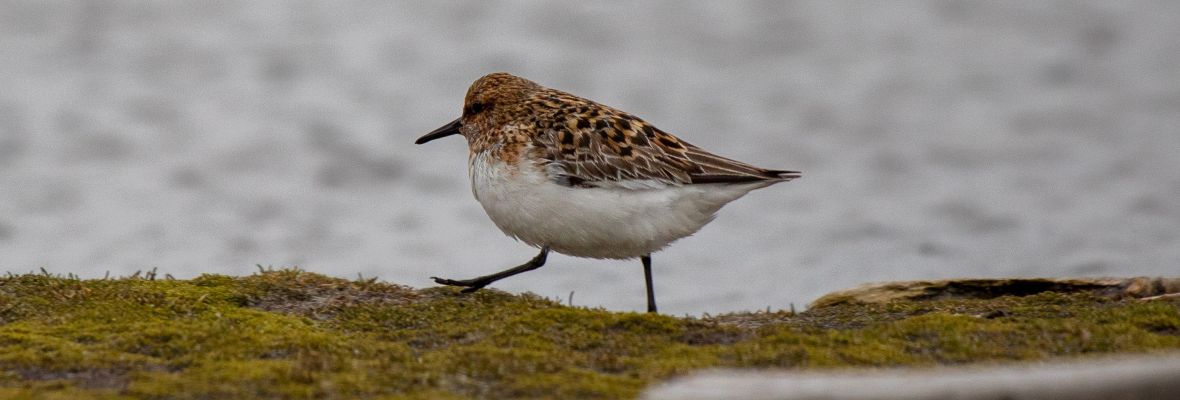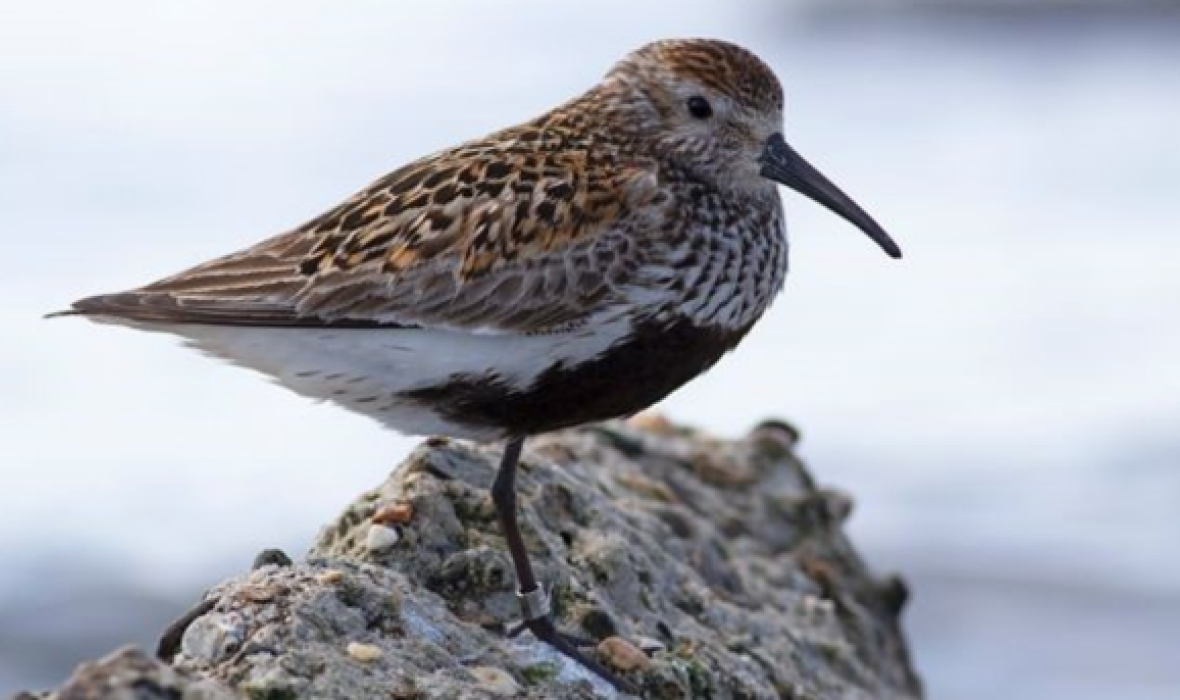Where does the Dunlin live?
As a wader bird, the dunlin lives in the wet and muddy areas of coastal and high Arctic environments. During migration, it travels thousands of kilometres and can be seen in tidal flats, estuaries, and wetlands along many European coastlines. It breeds in a circumpolar range across the Arctic and several northern temperate regions. In Svalbard, the dunlin has been reported to breed in small numbers on Bjørnøya and in the western parts of Spitsbergen, primarily in the Isfjorden and Kongsfjorden areas.
What does a Dunlin look like?
The Dunlin is a small wader bird with both female and male having a similar appearance. In summer, it features a brown-black back with rusty and yellow-brown tips, a brown-streaked neck and breast, and a distinctive black triangular patch on its belly. Its black legs and slightly curved black beak are easy to spot, especially when foraging.In winter, the dunlin bird transforms, with light grey-brown upperparts and white underparts, making it harder to identify if you're unfamiliar with its seasonal plumage changes. Juveniles look similar to adults in summer plumage, but their upper parts are dark brown with yellow-brown edged feathers. They feature a speckled yellow-brown breast and a white belly adorned with dark speckles on the flanks.
How big is a Dunlin?
Dunlins are small birds with an average of 17-21 cm in length, 40-65 g in weight and 32-36 cm in wingspan. They are smaller and more slender than the purple sandpiper, another shorebird found in the coastal and Arctic regions.
What does the Dunlin eat?
Dunlin feeds on small invertebrates found in tidal zones, such as insects, larvae, marine worms, small molluscs, and crustaceans.




